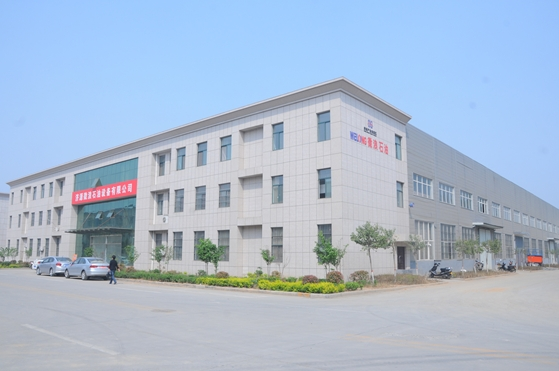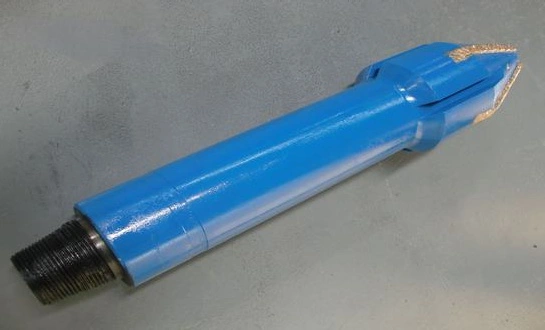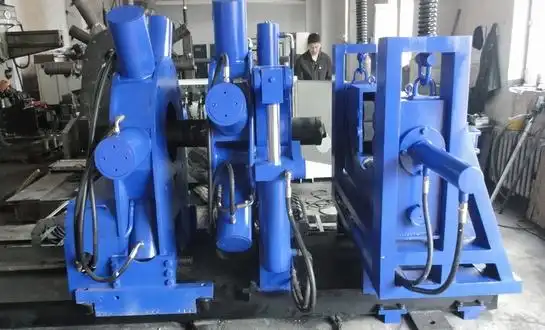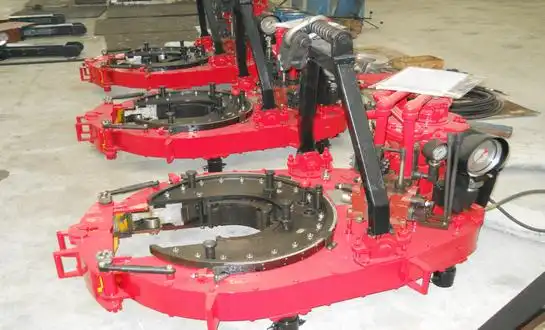Why Is 42CrMo4 Ideal for High-Stress Shaft Forging
Superior Mechanical Properties
42CrMo4 alloy steel boasts an impressive combination of strength and toughness, making it exceptionally well-suited for high-stress applications. Its high tensile strength, typically ranging from 900 to 1200 MPa after heat treatment, allows forged shafts to withstand substantial loads without deformation. This strength is complemented by excellent ductility, which provides resistance to brittle fracture under sudden impacts or stress.
The material's high yield strength, often exceeding 700 MPa, ensures that shafts maintain their shape and dimensions even under severe operating conditions. This is particularly crucial in applications where precise tolerances must be maintained for optimal performance. Furthermore, the fatigue strength of 42CrMo4 is remarkable, allowing forged shafts to endure cyclic loading over extended periods without failure.
Enhanced Microstructure Through Forging
The forging process significantly enhances the already impressive properties of 42CrMo4. During hot forging, the material undergoes plastic deformation, which results in a refined grain structure. This refinement leads to improved mechanical properties, including increased strength and toughness. The alignment of the grain flow during forging also contributes to superior strength in the direction of the applied forces, making forged shafts particularly resistant to bending and torsional stresses.
Moreover, the forging process helps eliminate internal defects and porosity that may be present in the raw material. This results in a more homogeneous microstructure, reducing the likelihood of stress concentrations and potential failure points. The combination of material properties and the forging process creates shafts with exceptional structural integrity and reliability.
Excellent Machinability and Heat Treatment Response
Despite its high strength, 42CrMo4 exhibits good machinability, allowing for precise finishing operations after forging. This characteristic is crucial for achieving the tight tolerances often required in high-performance shaft applications. The material's predictable behavior during machining processes contributes to consistent quality and reduces production costs.
42CrMo4 also responds exceptionally well to heat treatment processes. Through carefully controlled quenching and tempering, the material's properties can be further optimized to meet specific application requirements. This versatility in heat treatment allows manufacturers to fine-tune the balance between hardness, strength, and toughness, ensuring that forged shafts perform optimally in their intended environments.
What Industries Rely on 42CrMo4 Forged Shafts
Automotive and Transportation
The automotive industry heavily relies on 42CrMo4 forged shafts for critical drivetrain components. Crankshafts, camshafts, and driveshafts made from this material offer the strength and durability needed to withstand the high stresses and cyclic loading experienced in modern engines and transmissions. The material's resistance to wear and fatigue ensures long-lasting performance, contributing to improved vehicle reliability and reduced maintenance costs.
In heavy-duty vehicles and off-road equipment, 42CrMo4 forged shafts are essential for axles, steering components, and power transmission systems. These applications demand components that can endure extreme loads, harsh environments, and constant vibration. The superior mechanical properties of 42CrMo4 shaft forging make them ideal for these challenging conditions, providing the necessary strength and durability to maintain operational efficiency and safety.

Aerospace and Defense
The aerospace industry utilizes 42CrMo4 forged shafts in various critical applications, including landing gear components, actuator shafts, and engine parts. The material's high strength-to-weight ratio and excellent fatigue resistance are particularly valuable in this sector, where weight reduction and reliability are paramount. Forged shafts made from 42CrMo4 can withstand the extreme temperatures and loads encountered during flight while maintaining their structural integrity.
In defense applications, 42CrMo4 forged shafts find use in military vehicles, weaponry systems, and naval equipment. The material's ability to withstand shock loads and its resistance to corrosion make it suitable for components that must perform reliably under harsh operational conditions. From tank turret mechanisms to shipboard machinery, these forged shafts contribute to the robustness and dependability of critical defense systems.
Energy and Heavy Industry
The energy sector, including oil and gas, wind power, and hydroelectric generation, extensively employs 42CrMo4 forged shafts. In oil and gas drilling equipment, these shafts are used in mud pumps, drawworks, and rotary tables, where they must endure high torque and abrasive environments. Wind turbine main shafts and gearbox components also benefit from the material's strength and fatigue resistance, ensuring long-term reliability in challenging offshore and onshore conditions.
Heavy industrial machinery, such as mining equipment, construction machinery, and industrial pumps, rely on 42CrMo4 forged shafts for their critical rotating components. These applications demand shafts that can withstand extreme loads, shock impacts, and harsh operating environments. The durability and wear resistance of 42CrMo4 forged shafts contribute to increased equipment uptime and reduced maintenance costs in these demanding industrial settings.
How to Ensure Quality in 42CrMo4 Shaft Forging Processes
Material Selection and Testing
Ensuring the quality of 42CrMo4 shaft forging begins with proper material selection and rigorous testing. High-quality raw materials from reputable suppliers should be sourced, with each batch undergoing chemical composition analysis to verify compliance with specified standards. This analysis helps detect any variations or impurities that could affect the final product's performance.
Prior to forging, the material should undergo mechanical property testing, including tensile strength, yield strength, and impact resistance evaluations. These tests provide baseline data and help identify any inconsistencies in the raw material. Additionally, non-destructive testing methods such as ultrasonic inspection can be employed to detect internal defects or inclusions that might compromise the integrity of the forged shaft.
Process Control and Optimization
Maintaining strict control over the forging process is crucial for producing high-quality 42CrMo4 shafts. Temperature management is particularly critical, as the material's properties are significantly influenced by heating and cooling rates. Precise control of forging temperatures, typically ranging from 1150°C to 1250°C, ensures optimal grain flow and prevents issues such as overheating or incomplete recrystallization.
The forging sequence, including the number of hits and the degree of deformation at each stage, should be carefully planned and executed. Computer-aided simulation tools can be utilized to optimize the forging process, predicting material flow and identifying potential defects before production. Implementing process monitoring systems that track key parameters such as force, temperature, and deformation rates in real-time allows for immediate adjustments and consistent quality control.
Heat Treatment and Final Inspection
Post-forging heat treatment is essential for achieving the desired mechanical properties in 42CrMo4 shafts. The heat treatment process typically involves quenching and tempering, with parameters carefully controlled to attain the optimal balance of strength, toughness, and hardness. Proper heat treatment not only enhances the material's properties but also helps relieve internal stresses induced during forging.
Final inspection of forged 42CrMo4 shafts should include a comprehensive battery of tests and measurements. Dimensional checks ensure compliance with specified tolerances, while surface inspections detect any visible defects or irregularities. Non-destructive testing methods such as magnetic particle inspection or dye penetrant testing can reveal surface and near-surface flaws. For critical applications, destructive testing of sample pieces from the production batch may be necessary to verify mechanical properties and microstructure.
Source: CHINA WELONG-Oilfield tools Manufacturer
FAQ about Shaft forging
What are the advantages of shaft forging over other manufacturing methods?
Shaft forging offers several advantages over alternative manufacturing methods like casting or machining from bar stock. The forging process aligns the grain structure of the material, resulting in superior strength and toughness. Forged shafts typically exhibit better fatigue resistance and impact strength compared to their cast or machined counterparts. Additionally, forging can produce near-net-shape components, reducing material waste and machining time.
How does the forging process affect the microstructure of 42CrMo4 steel?
The forging process significantly influences the microstructure of 42CrMo4 steel. During hot forging, the material undergoes dynamic recrystallization, which refines the grain structure. This refinement leads to improved mechanical properties, including increased strength and toughness. The forging process also helps break down and distribute any inclusions or segregations present in the original ingot, resulting in a more homogeneous microstructure.
What are the key factors to consider when designing a forged shaft?
When designing a forged shaft, several factors must be considered to ensure optimal performance and manufacturability. These include the expected loads and stresses the shaft will encounter during operation, the desired mechanical properties, and any specific geometric features required for the application. The forging process itself must be taken into account, including draft angles, parting line location, and potential for flash formation. Additionally, consideration must be given to post-forging operations such as heat treatment and machining to achieve final dimensions and surface finish.
In conclusion, 42CrMo4 shaft forging represents a critical manufacturing process for producing high-performance components across various industries. The superior mechanical properties of 42CrMo4 alloy steel, combined with the benefits of the forging process, result in shafts that can withstand extreme conditions and deliver reliable performance. As industries continue to demand stronger, more durable components, the importance of quality 42CrMo4 shaft forging is likely to grow. For those seeking expert guidance and high-quality forged shafts, Welong stands ready to provide comprehensive solutions tailored to your specific needs. To learn more about our capabilities in shaft forging and other oilfield products, please don't hesitate to contact us at oiltools15@welongpost.com.
References
1. Ghaffari, A., & Ghasemi, A. (2017). "Optimization of forging process for 42CrMo4 steel shafts." Journal of Materials Processing Technology, 247, 40-50.
2. Krajnik, P., & Hanzlík, J. (2016). "The influence of forging parameters on the properties of 42CrMo4 steel components." Procedia CIRP, 44, 247-250.
3. Liu, X., & Zhang, H. (2019). "Effect of heat treatment on the mechanical properties of 42CrMo4 forged shafts." Materials Science and Engineering: A, 741, 35-42.
4. Zhang, Z., & Chen, G. (2018). "Study on the microstructure and mechanical properties of 42CrMo4 forged steel." Journal of Alloys and Compounds, 765, 1033-1039.
5. Uhlmann, E., & Sandoval, R. (2015). "Forging of 42CrMo4 steel: Effects of forging temperature and cooling rate on mechanical performance." Materials Testing, 57(1), 65-71.
6. Zhang, Y., & Liu, T. (2020). "The impact of forging and quenching processes on the fatigue strength of 42CrMo4 shafts." International Journal of Fatigue, 136, 105626.





